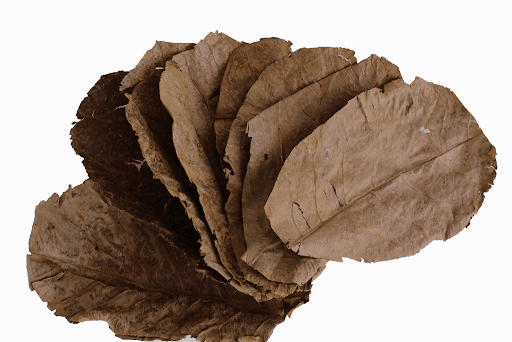
Indian almond leaves, often referred to as Terminalia catappa leaves, are frequently used in the hobby of keeping aquariums to enhance the quality of the water and support fish health. These leaves contain a lot of tannins, which are naturally antifungal and antibacterial. They also have the ability to imitate many fish species’ native habitats and lower the pH of the water. Read on to find out more about the advantages of using Indian almond leaves in aquariums as well as where to buy high-quality leaves.
Benefits of Indian Almond Leaves
Fish in aquariums and other aquatic animals can benefit greatly from Indian almond leaves in a variety of ways. They have antibacterial and antifungal qualities, which is one of their most significant advantages. It has been demonstrated that the natural compounds present in leaves, known as tannins, prevent the growth of dangerous bacteria and fungi in water. By doing this, you can maintain your fish’s health and prevent disease.
Indian almond leaves have antibacterial qualities in addition to lowering the pH of the water. This is due to the acidic tannins found in the leaves, which can cause the water’s alkalinity to decrease. For fish species like bettas and discus that prefer a more acidic environment, this can be very advantageous.
The ability of Indian almond leaves to mimic a variety of fish species’ natural habitats is another advantage. Numerous fish inhabit waters that are tannic-rich and have a brownish tinge in the wild. You may create a similar habitat in your aquarium by adding Indian almond leaves, which can lessen stress and encourage natural behaviors.
Where to Find High-Quality Indian Almond Leaves for Sale
Finding high-quality indian almond leaves for sale is crucial if you want to use Indian almond leaves in your aquarium. The following advice may help you locate the best leaves:
Look for leaves that don’t contain any dangerous chemicals or pesticides. It’s critical to ensure that any pesticides or other contaminants have not been present in Indian almond leaves because they are frequently picked from the wild.
Pick those leaves that are healthy and large. Greater tannin released into the water from larger leaves may be advantageous to your fish. Healthy leaves will also live longer and degrade more slowly in your aquarium.
Purchase from a dependable vendor. Although there are numerous online vendors selling Indian almond leaves, not all of them are trustworthy. Choose a vendor who has a solid reputation for producing high-quality goods and positive customer ratings.
Think about the cost. Depending on the number and quality, Indian almond leaves might cost different amounts. Finding a vendor who charges a fair price for their leaves is crucial because you don’t want to compromise quality for a lower price.
Look for credentials. Indian almond leaves may be available from some vendors if they are organically or sustainably harvested. Knowing that the leaves were obtained ethically and without causing environmental damage can give you peace of mind.
You might also be able to get Indian almond leaves at your neighborhood fish or pet store in addition to online retailers. Before making a purchase, make sure to inquire with the staff about the leaves’ quality and origin.
How to Use Indian Almond Leaves in Your Aquarium
Knowing how to use Indian almond leaves in your aquarium is crucial once you’ve located premium varieties for sale. Here are a few pieces of advice:
- Before adding the leaves to your aquarium, give them a good rinse. This will clear the leaves of any dirt or debris that may be there.
- The leaves should be put in your tank. Both the substrate and the water’s surface are options for placement. Within a few hours to a few days, the leaves will start to emit tannins into the water.
- Keep an eye on the water’s pH. The pH may slightly fall as the leaves release tannins into the water. It’s crucial to routinely check the pH levels to make sure they remain in the right range for the fish species you’re keeping.
- As necessary, swap out the leaves. The efficiency of Indian almond leaves will inevitably deteriorate. To ensure that your fish continues to benefit from the tannins, it’s crucial to occasionally change the leaves.
- Keep an eye out for variations in the color of the water. Tannins from the leaves may cause the water to turn brownish as they release them. Even while this is natural and can help your fish mimic a natural environment, it’s crucial to monitor the water’s color and alter the number of leaves you’re using as necessary.
Final Thoughts
Indian almond leaves are a wonderful addition to your aquarium and offer your fish and other aquatic animals a number of advantages. Make sure to purchase high-quality indian almond leaves for sale from a reliable supplier. To ensure that your fish obtain the most benefits from the leaves you’ve chosen, it’s crucial to use them properly in your aquarium. Indian almond leaves can help maintain your fish’s health and happiness for many years with the proper care and attention.

